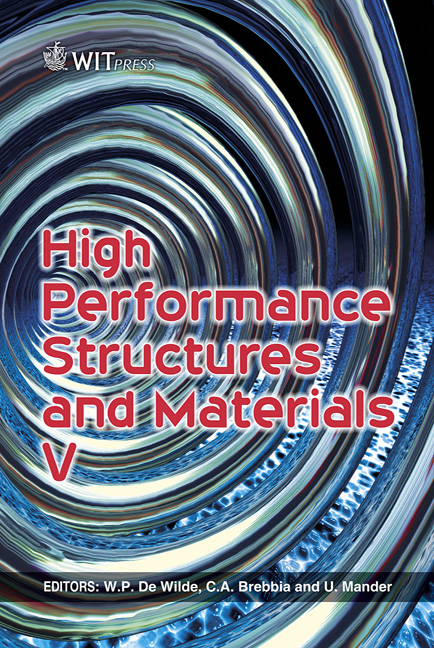Injection Molding And Mechanical Properties Evaluation Of Short Jute Fiber Polypropylene Reinforced Composites
Price
Free (open access)
Transaction
Volume
112
Pages
8
Page Range
301 - 308
Published
2010
Size
588 kb
Paper DOI
10.2495/HPSM100281
Copyright
WIT Press
Author(s)
F. A. Mirza, S. M. Rasel, A. M. Afsar, B. S. Kim & J. I. Song
Abstract
Composites with polypropylene (PP) and 2 wt% NaOH treated jute fibers were prepared by the injection molding technique. In order to improve the affinity and adhesion between the reinforced jute fiber and the polymer matrix (polypropylene) during manufacturing, maleic anhydride grafted polypropylene (MAPP) as a coupling agent has been employed. Tensile tests were carried out to evaluate the composite mechanical properties. The tensile test results showed the composite to have higher strength and modulus than pure polypropylene (PP). In addition, strength and modulus were found to be influenced by the variation of MAPP contents (1%, 2%, and 3%). The tensile strengths were improved by 19.3%, 21.7%, and 23.8%, respectively, compared with the raw PP. The tensile moduli were improved by 110.7%, 122.7%, and 148%, respectively, compared with the raw PP. Keywords: natural fibers, polypropylene, surface treatments, interfacial bonding, mechanical properties. 1 Introduction Over the past decade there has been a growing interest in the use of lignocellulosic fibers as reinforcing elements in polymeric matrices [1–5]. The specific properties of this natural product, namely low cost, lightweight, renewable character, high specific strength and modulus, availability in a variety of forms throughout the world, reactive surface and the possibility to generate
Keywords
natural fibers, polypropylene, surface treatments, interfacial bonding, mechanical properties





